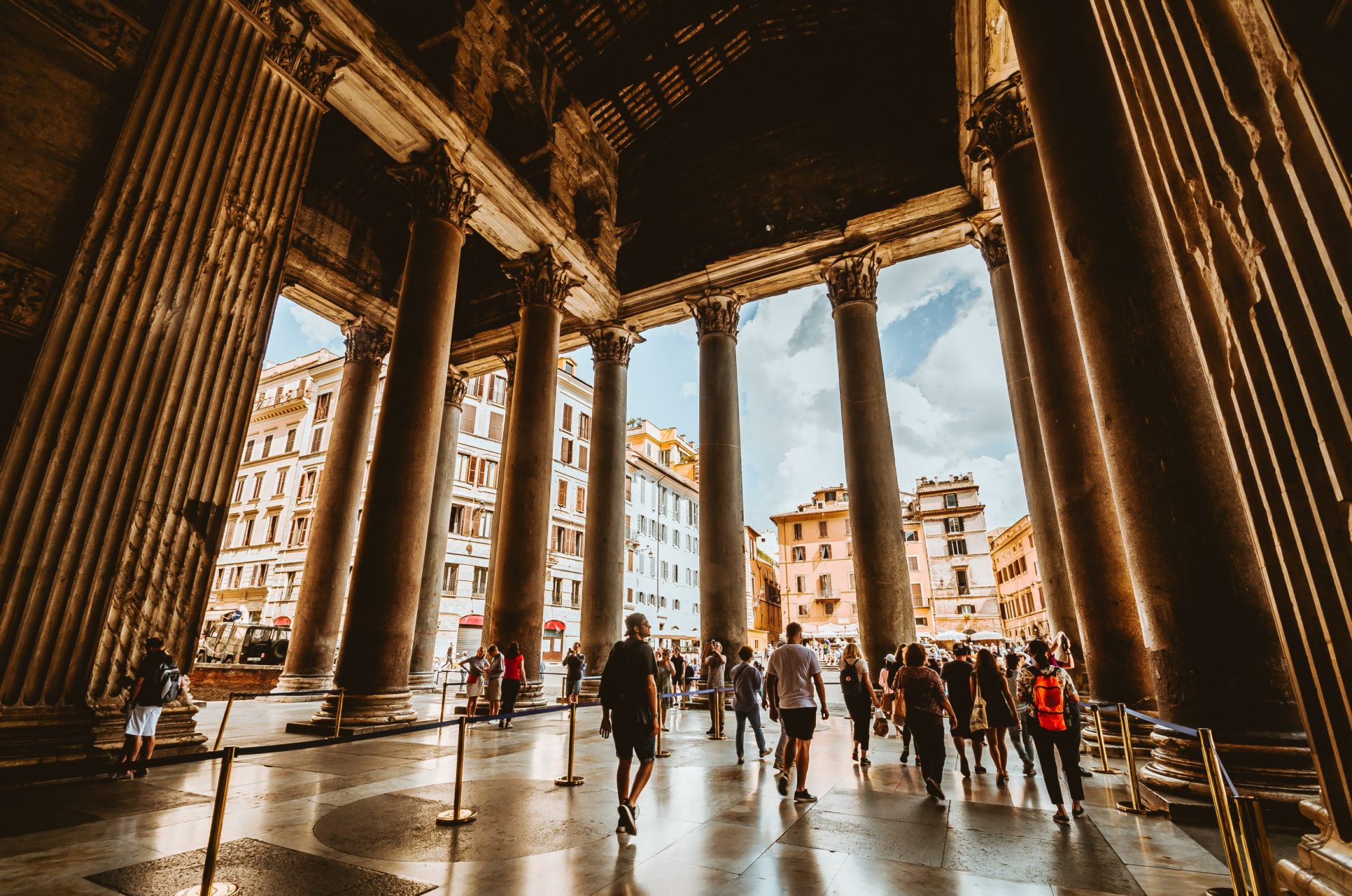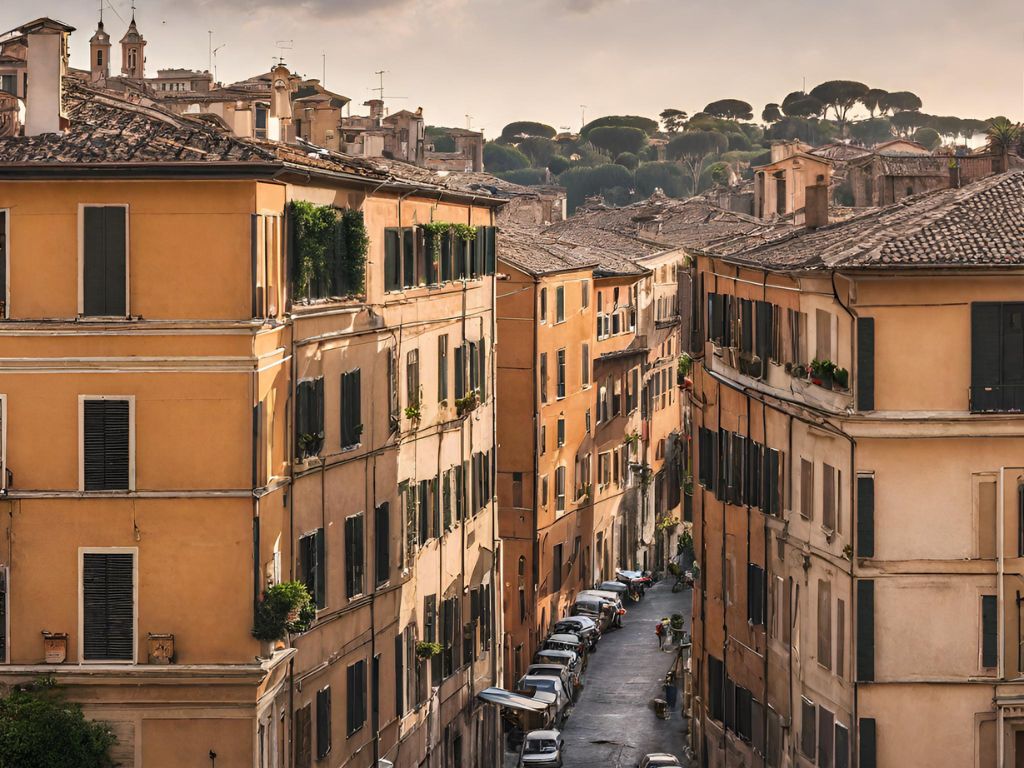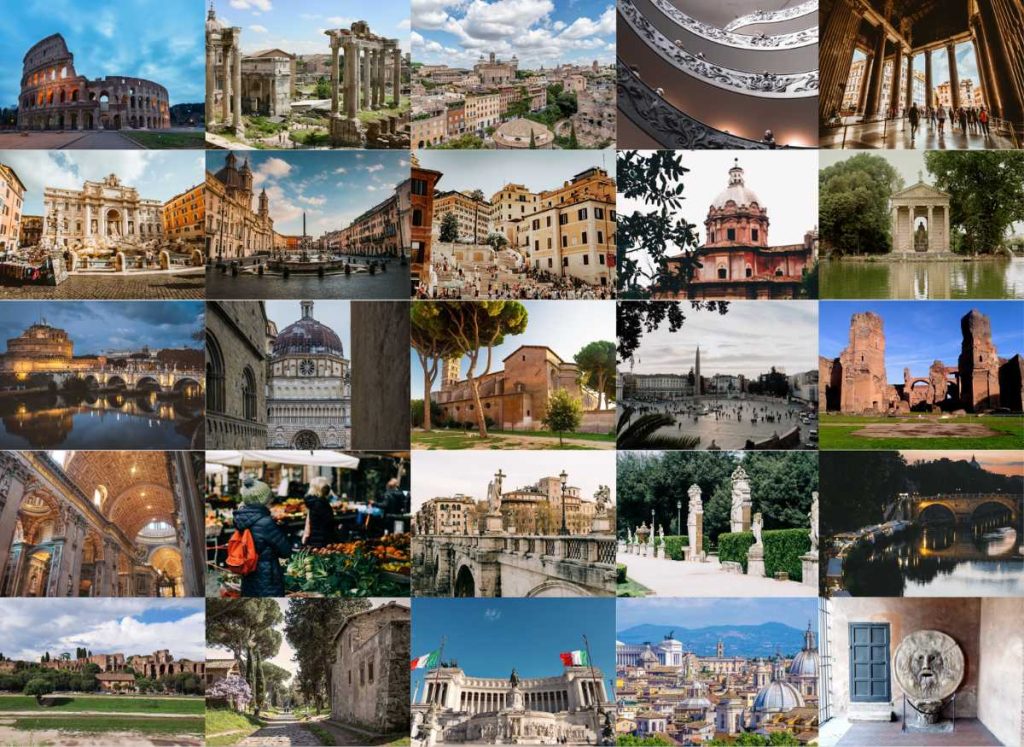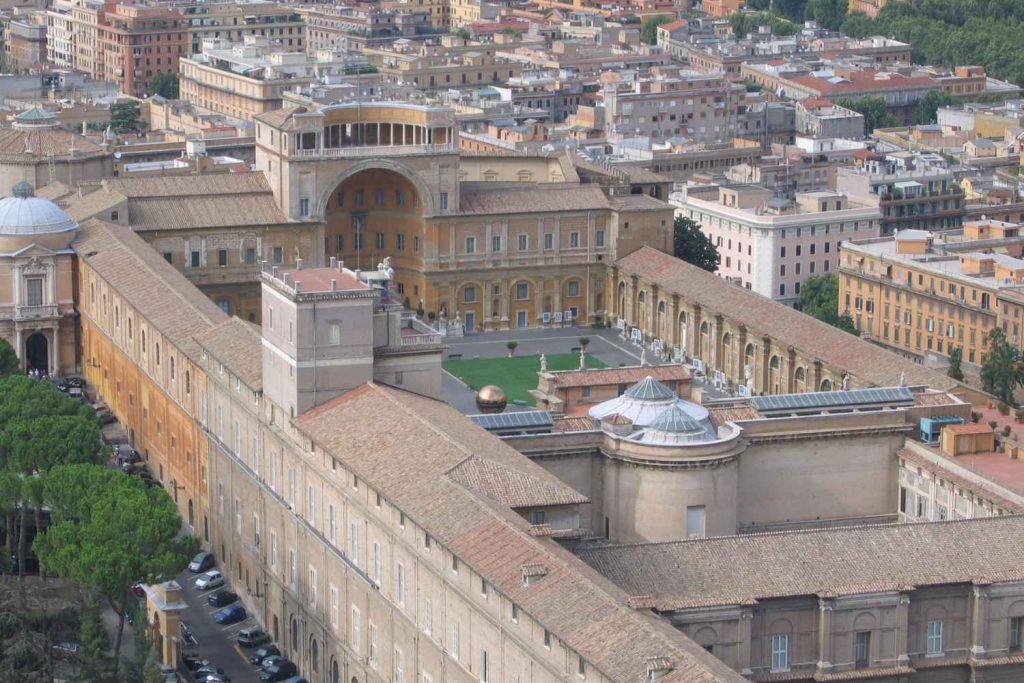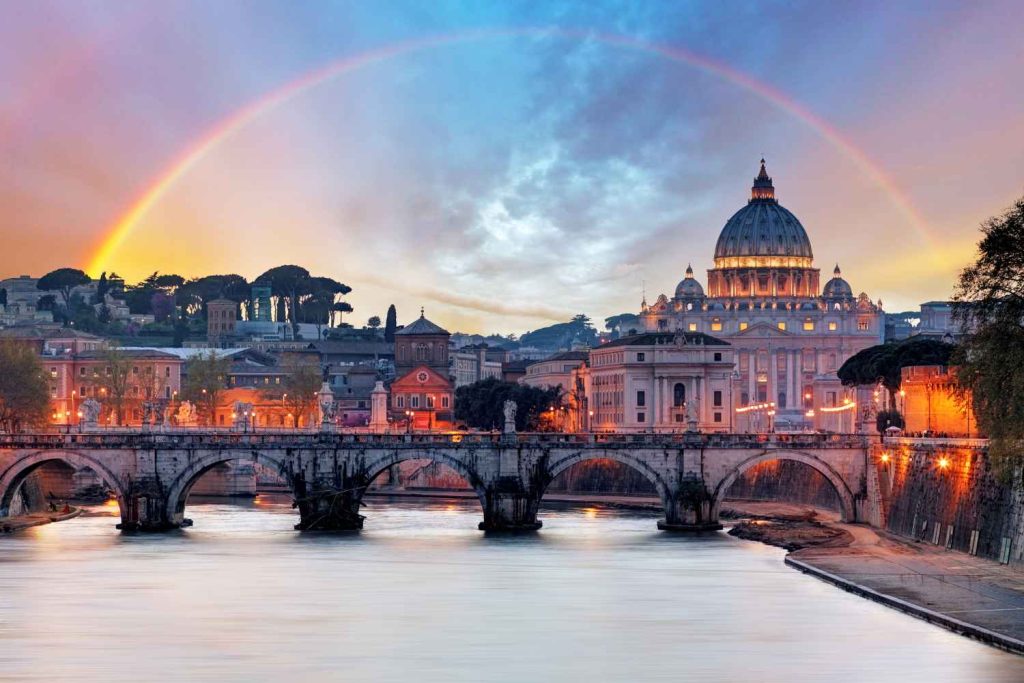The Pantheon, an extraordinary testament to ancient engineering and architectural genius, has captivated visitors for over two millennia. In this journey, we will delve into the intricacies of The Pantheon, revealing its storied history, remarkable design, and lasting cultural importance. Join us as we pass through the hallowed doors of this remarkable monument, embarking on a quest to unveil the enduring allure of The Pantheon.
A Glimpse into History
To truly appreciate the significance of The Pantheon, we must first delve into its remarkable history. Commissioned by the Emperor Hadrian in 126 AD, this iconic structure was designed to replace an earlier temple. Originally, The Pantheon was dedicated to all Roman gods (hence its name, which means “temple of all the gods”).
As we stand before its grand facade, it’s impossible not to be awed by the sheer scale of this ancient marvel. The Pantheon’s classical architecture showcases the Romans’ mastery of engineering and construction techniques that remain a subject of admiration even today.
Ingenious Architecture
One of the most remarkable features of The Pantheon is its perfectly spherical dome. Composed of concrete and adorned with intricate patterns of coffers, this engineering marvel is a testament to the Romans’ architectural prowess. Remarkably, it wasn’t until the 20th century that architects managed to surpass the size of The Pantheon’s dome without the use of steel reinforcements.
The oculus, an opening at the apex of the dome, is a captivating design element. Not only does it provide natural illumination, but it also creates an awe-inspiring connection between the heavens and earth. As sunlight filters through the oculus, it casts ethereal beams that dance upon the marble floor below, creating a mesmerising interplay of light and shadow.
A Journey Through Time
Walking into The Pantheon, you step back in time. The grandeur of the interior leaves an indelible impression on every visitor. The vast circular space is punctuated by towering Corinthian columns, each standing as a sentinel of the past. The original bronze ceiling tiles, sadly stripped centuries ago, have been replaced with wooden coffering, but the aura of majesty remains.
At the heart of The Pantheon lies a poignant reminder of its history: the tombs of notable figures, including the artist Raphael and two Italian kings. These tombs are a testament to the enduring significance of The Pantheon, which has served as a place of worship, a symbol of power, and a mausoleum.
Religious Transformation
The Pantheon has witnessed a transformation over the centuries, transitioning from a temple dedicated to the Roman gods to a Christian church. In 609 AD, it was consecrated as the Church of Santa Maria ad Martyres by Pope Boniface IV. This conversion helped preserve the structure from the ravages of time and provided it with a renewed sense of purpose.
The Pantheon’s religious transformation is a reflection of Rome’s own evolution from an empire built on pagan traditions to the seat of the Catholic Church. Today, it continues to be used as a church, hosting religious services and events.
The Artistic Flourish
The Pantheon is not just a triumph of engineering; it’s also a canvas for artistic expression. The richly decorated interior features a harmonious blend of classical and Christian elements. The soaring altarpiece, adorned with the Virgin Mary and various saints, adds a touch of divine grace to the space.
The elaborate tombs and memorials within The Pantheon are works of art in their own right. Raphael’s tomb, for instance, is an exquisite marble masterpiece created by the renowned sculptor Lorenzetto. As you explore the interior, take a moment to appreciate the intricate details of these artistic treasures.
The Sound of Rain
A unique and enchanting feature of The Pantheon is its ability to transform a simple rain shower into a mesmerising spectacle. When it rains, water seeps through the oculus and falls in a gentle cascade to the floor below. This natural phenomenon adds an element of wonder to the already awe-inspiring interior, creating a serene ambiance that is nothing short of magical.
The Perfect Geometry
The Pantheon’s architectural precision extends beyond its dome. The proportions of the building are a marvel in themselves. The diameter of the dome is exactly equal to the height of the building from the floor to the oculus. This harmony in proportions creates a sense of equilibrium that is pleasing to the eye and imparts a feeling of tranquillity to those who enter.
Modern Influence
The Pantheon’s enduring influence extends far beyond its historical context. Its architectural principles have inspired countless buildings throughout history, from the Renaissance to the present day. The dome’s design has been replicated in numerous structures, including the United States Capitol in Washington, D.C
A stunning video tour of The Pantheon
Visiting The Pantheon
As you plan your visit to The Pantheon, keep in mind that it is open to the public and admission is free. The best time to visit is during the early morning or late afternoon when the crowds are thinner, allowing you to fully immerse yourself in the ambiance of this ancient marvel.
Before entering, take a moment to appreciate the grandeur of the exterior. The imposing portico with its towering columns is a sight to behold and offers the perfect opportunity for photographs. As you step inside, let your eyes adjust to the dimmer light, and allow yourself to be transported to another era.
When exploring the interior, be sure to take in the intricate details of the artwork, tombs, and altars. The Pantheon’s rich history is etched into every stone and fresco, waiting to be discovered by curious visitors.
Experience a quick tour of the Pantheon with this Pantheon Express Guided Tour!
Looking for accommodation near the Pantheon? Explore our curated list of hotels within close proximity.
The Pantheon stands as a symbol of Rome’s enduring legacy, a testament to the ingenuity of its builders, and a source of inspiration for generations of architects and artists. Its timeless beauty, innovative design, and cultural significance continue to captivate visitors from around the world.
While you stand beneath the oculus, gazing up at the heavens, you can’t help but feel a profound connection to the past and a sense of awe for the human achievements that have endured for over two thousand years. The Pantheon is more than a building; it is a window into the soul of Rome, a city that has preserved its history and embraced its future with grace and elegance.
So, when you find yourself in the Eternal City, make sure to pay a visit to The Pantheon. Step through its hallowed doors, breathe in the history, and let the whispers of the past transport you to a time when gods and emperors walked the earth. The Pantheon is not just a destination; it’s a journey through time itself.
More articles you might like...
You can find more great Rome content in the following categories;
All about Vatican City Commonly Asked Rome Questions Rome Accommodation Rome Food and Drink Rome History and Culture Rome Neighbourhoods Rome Tours and Must-See Attractions
